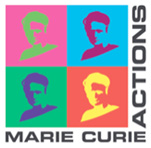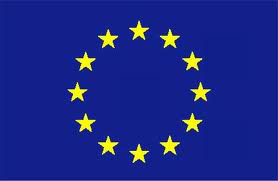ESR15: Science, Business & Innovation in the pharmaceutical sciences
Host: VU University Amsterdam, The Netherlands
Academic supervisors: Prof. Peter van der Sijde, dr. Iina Hellsten & dr. Jacqueline van Muijlwijk (VU University Amsterdam)
Researcher: Angelo Kenneth Romasanta
Download the full description of this project: ESR15: Science, Business & Innovation in the pharmaceutical sciences
Catching the Waves of a New Scientific Field: Creating Opportunities in Fragment-based Drug Discovery
Creating opportunities from scientific advances is a complex challenge in the pharmaceutical sciences. On one hand, researchers and firms need to differentiate to gain competitive advantage against other players in the field. At the same time, they still need to conform in order to gain access to various resources and build legitimacy. The main question then in this research is: how do firms manage the tension between differentiation and conformity to create opportunities in a new scientific field.
Managing this tension between being different yet remaining familiar is known as optimal distinctiveness. In a multidisciplinary study involving innovation management and the pharmaceutical sciences, we conduct multilevel empirical research to explore how individuals and organizations pursued optimal distinctiveness in fragment-based drug discovery.
In our first study presented at the R&D Management conference, we build a picture of how optimal distinctiveness is pursued in the pharmaceutical industry. We use bibliometric methods to survey 1,800 articles by innovation scholars who looked at the pharmaceutical industry from various perspectives. Drawing out from their insights, we then distilled various areas where individuals and firms compete and cooperate for optimal distinctiveness.
In our second study, we used 4,000 publications to analyze the emergence of fragment-based drug discovery and its development over time. We show how academia and industry were both important to the scientific development and commercialization of the field. We also show how a crucial role in knowledge development lay in various researchers’ integration of scientific ideas. This study has been published in Drug Discovery Today.
Our third study shows how firms pursued optimal distinctiveness. In a qualitative case study, we peeked inside the black box of how two big pharmaceutical companies adopted FBDD. Working from the process perspective of absorptive capacity, we explored how firms pursued legitimacy and distinctiveness as they built capabilities in FBDD. We show that it is important to manage not only the external pursuits of optimal distinctiveness but also the parallel internal dynamics within firms.
In our fourth study, we look at how researchers are gaining skills in new fields. Since it is not straightforward to learn skills in an emerging scientific field through traditional routes, we look at the EU’s Innovative Training Networks (ITN) initiative. In this study, we discuss how ITNs can respond to training required in developing fields by allowing researchers to general skills required to practice drug discovery while at the same time distinguishing themselves through the specialized techniques such as FBDD.
In our fifth study, which we are currently conducting, we look at how small firms pursued differentiation and legitimacy when FBDD was still emerging. Through interviews with new ventures created to take advantage of FBDD, we are exploring the balance necessary to be as different as legitimately possible.
Publications and conference presentations
• Romasanta, Angelo KS, IJP de Esch and Peter van der Sijde. “Conforming to Differentiate: The Pursuit of Optimal Distinctiveness in R&D.” Under Review
• Romasanta, Angelo KS, IJP de Esch and Peter van der Sijde. “Riding the wave of a new scientific field: How pioneers create opportunities amidst hype and hope” Accepted at Babson College Entrepreneurship Research Conference (2019).
• Romasanta, Angelo KS and Peter van der Sijde. “Innovation in the pharmaceutical industry: Mapping the research landscape.” R&D Management Conference (Milan IT, 2018).
• Romasanta, Angelo KS, et al. “When fragments link: a bibliometric perspective on the development of fragment-based drug discovery.” Drug Discovery Today (2018).
• Romasanta, Angelo KS, et al. “Patents and publications landscape in fragment-based drug discovery.” High Tech Small Firms Conference (Amsterdam NL, 2017).
• Romasanta, Angelo KS, et al. “The patent landscape of fragment-based drug discovery.” Fragments 2017: 6th RSC-BMCS Fragment-based Drug Discovery Meeting (Vienna AT, 2017).
Other projects
- ESR1: 3D Fragments with small aliphatic rings – David Hamilton
- ESR2: Novel 3D fragments – Hanna Francesca Klein
- ESR3: Warhead Library of Covalent Fragment Binders – Aaron Keeley
- ESR4: Development of FBLD techniques for Intrinsically Disordered Proteins – Darius Vagrys
- ESR5: Biophysics Based FBLD – Sébastien Keiffer
- ESR6: FBLD experimental methods – Edward Fitzgerald
- ESR7: Understanding PDE binding kinetics – Pierre Boronat
- ESR8: Virtual Screening of Fragment Libraries of Covalent Binders – Andrea Scarpino
- ESR9: Fragment evolution platform – chemical navigation – Moira Rachman
- ESR10: Fragment evolution platform – molecular simulations – Maciej Majewski
- ESR11: Fragment-based approaches to identify novel PPI inhibitors – Lorena Zara
- ESR12: Covalent fragments to activate industrial enzymes – Eleni Makraki
- ESR13: Fragment-based assessment of new antibiotic target – Bas Lamoree
- ESR14: Targeting allosteric pockets with FBLD – Lena Münzker
Contact details
Please contact us at:
info@fragnet.eu
FRAGNET Coordinator
VU University Amsterdam
The Netherlands
Funded by
 Marie Curie Actions
Marie Curie Actions
 EU Horizon 2020
EU Horizon 2020
 European Union
European Union

